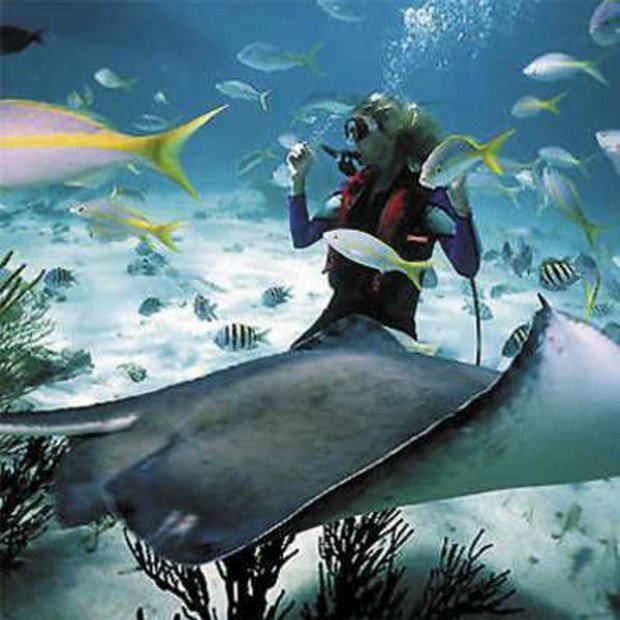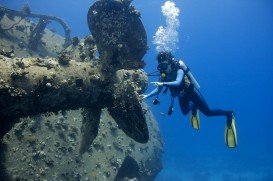
Notre Dame d’Arvor, Wardang Island
Wardang Island, also known as Wauraltee Island, is a small island of 20 km²/7.7 mi² in the Spencer Gulf, at 11 km/6 mi in the northwestern coast of Port Victoria on the Yorke Peninsula, South Australia.
Home > WATER SPORTS > Scuba Diving > The Royal Shepherd, South Head
Apart from breathtaking views of the Sydney CBD and the Pacific Ocean, there are several excellent dive sites all along this section. The Royal Shepherd is one of them.
The spot is located outside Sydney Harbour, off South Head. The Royal Shepherd sank in 1890 and now lies at a depth of 27 m/88.5 ft. The visibility is good on high tide and it can be dived by advanced divers.
Water temperature is up to 21°C/69.8°F in summer and early autumn months and between 14-18°C/57.2-64.4°F in winter. Expect to see the engine, boiler, drive-shaft and propeller throughout the area. Apart from the wreck, divers may come across with moray eels, cuttlefish, some species of leatherjackets and bullseyes.
Note: book a boat dive in one of the many scuba schools located in the area.

Wardang Island, also known as Wauraltee Island, is a small island of 20 km²/7.7 mi² in the Spencer Gulf, at 11 km/6 mi in the northwestern coast of Port Victoria on the Yorke Peninsula, South Australia.
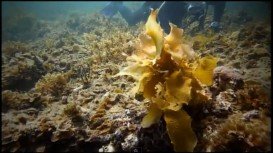
Adelaide, the liveliest city in Australia, is the capital of South Australia state. The city is situated on the Adelaide Plains and more specifically at the north side of Fleurieu Peninsula. Marino is a suburb in the south of Adelaide, sitting on coastal hills and overlooking at Gulf St Vincent. It neighbours with Seacliff, Hallett Cove and Kingston Park.
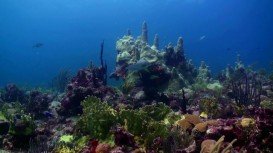
The Virgin Islands of the United States, or the U.S. Virgin Islands lie in the Caribbean Sea, east of Puerto Rico. This group of islands consist of the main islands of Saint Thomas, which is home to the capital city of the U.S. Virgin Islands, Saint John, Saint Croix, Water Island and other surrounding minor islands.The climate here is classified as tropical savanna climate, mostly affected by moderate trade winds.
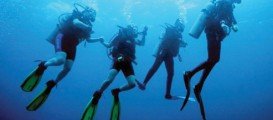
Myrtle Beach is a coastal city on the east coast of the United States, in Horry County, South Carolina. Thanks to the city's warm subtropical climate and amazing beaches, this spot attracts approximately 14 million visitors each spring, summer and fall. Myrtle Beach has a humid subtropical climate with abundant sunshine all the year round.
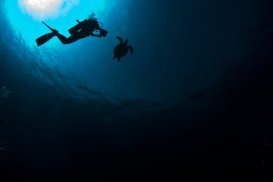
Clovelly is a beach-side suburb of Sydney, at about 8 km/4 mi in the south-east of Sydney's CBD (Central Business District).
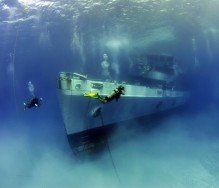
Caribbean Sea. The territory consists of three islands, the Grand Cayman, the Cayman Brac and the Little Cayman. George Town is the capital, located on Grand Cayman, the largest of the three islands. All of the islands enjoy a tropical marine climate, with hot summers and dry, cool winters.
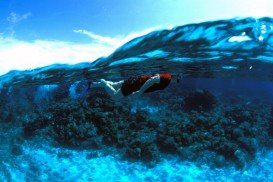
Little Bay is a coastal suburb of Sydney, at about 14 km/9 mi in the south-east of Sydney's CBD (Central Business District). Little Bay beach nestles between headlands to the south and north, providing a good shelter from prevailing sea conditions. It is a great location for snorkeling, as it is protected and calm.
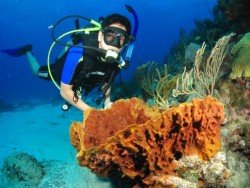
The wall is located at the north of Sydney Harbour, at the south-eastern end of the Long Reef. This site is considered to be the best reef dive site on the north shore.

Thredbo is an Australian ski resort, located at Kosciuszko National Park in New South Wales. The spot has the steepest overall terrain of any ski resort in mainland Australia while it offers the highest lifted point at 2037 m/6683 ft.
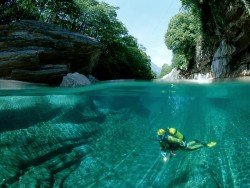
Botany Bay is located in Sydney, at about 13 km/8.1 mi in the south of Sydney's CBD (Central Business District). Botany Bay has an amazing marine life and the area around its entrance is very popular for scuba diving. The Tribars or The Container Wall is one of the many dive sites available on the spot.
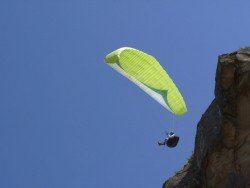
Warriewood is a suburb in northern Sydney, at about 26 km/16 mi in the north of Sydney's CBD (Central Business District).
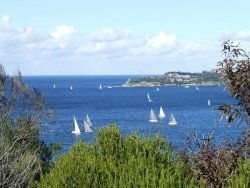
Manly is a suburb of northern Sydney. Historic landmarks, sandy beaches, hidden coves and impressive National Parks are certainly part of the charm of this destination. Sailing is one of many activities that visitors can choose from.

Port Hacking is located in southern Sydney, at about 30 km/19 mi south of Sydney's CBD (Central Business District). The area to the north of Port Hacking is more developed than the area to the south, which forms the northern boundary of the Royal National Park. It is south of Cronulla and northeast of Bundeena.

Kurnell is a suburb in southern Sydney, at about 22 km/14 mi in the south of Sydney's CBD (Central Business District). Kurnell is on the southern headland of Botany Bay, just opposite the suburb of La Perouse. Kurnell boasts some of Sydney’s top dive and surf sites.

